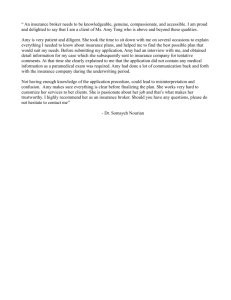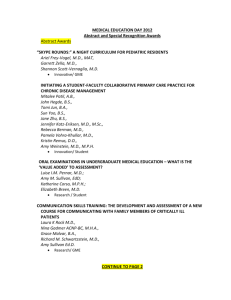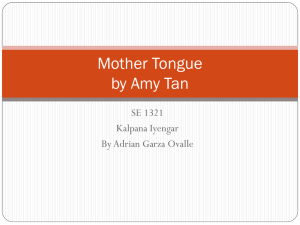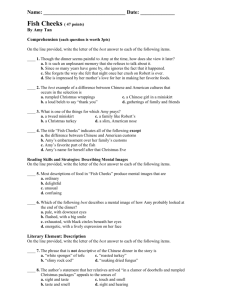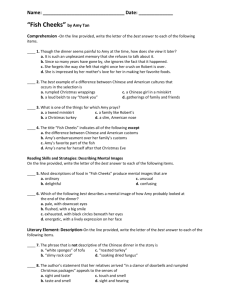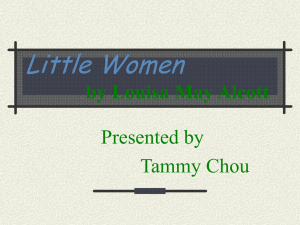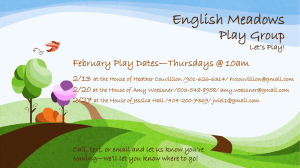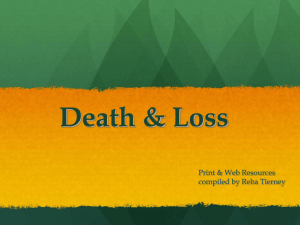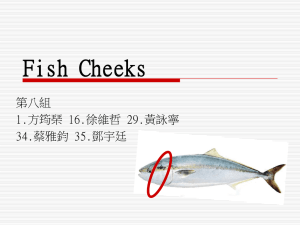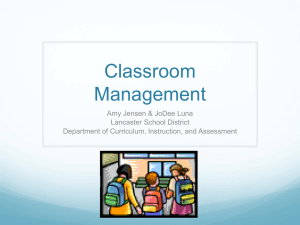Fish Cheeks Amy Tan ppt
advertisement
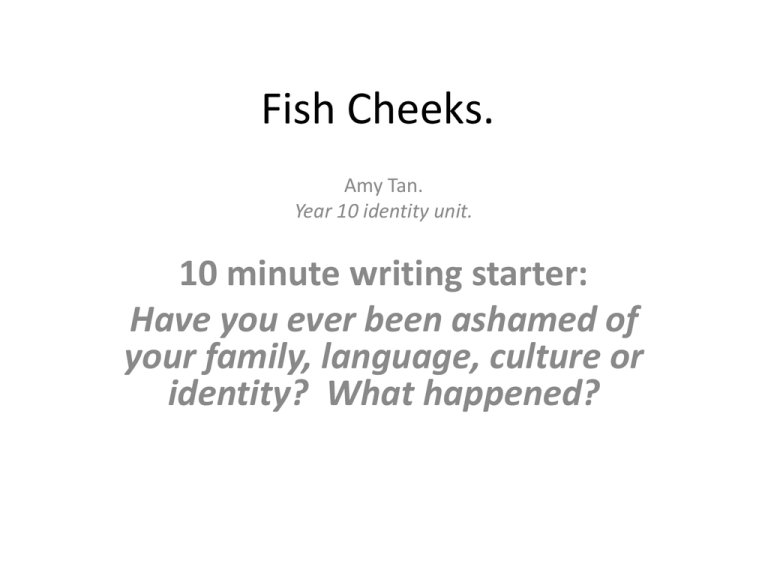
Fish Cheeks. Amy Tan. Year 10 identity unit. 10 minute writing starter: Have you ever been ashamed of your family, language, culture or identity? What happened? Fish Cheeks. Questions Answers • Point of view: • First person to show Amy’s experiences. • Negative at the beginning. Negative words- e.g clamor, despair, grimaced, stunned. Then a more positive view when Amy realizes her ‘lesson.’ • Cultural versus national, family identity. • Type of identity- positive or negative. • Type of identity. Fish Cheeks. • Why do you think Amy Tan wrote this? What lesson do we learn? • Amy wants to teach us to be proud of who are and to appreciate diversity (being different). • Amy wants to show us that we don’t have to fit in with others around us- her mum gives her a skirt so she can fit in on the outside, but says on the inside she’ll always be Chinese. • She wanted to introduce us to Chinese customs. • She wants to show what it is like to be a teenager growing up with multiple identities and the shame of being ‘different.’ Theme. With a partner, come up with a quote for each of these themes. • When we’re younger, we don’t always understand things like we do when we’re older. • Culture is an inextricable part of identity. • Pride. • The consequences of having different identitiese.g national (American) versus ethnic or cultural (Chinese). • That identity is often many things. • Celebrating diversity (being different) Imagery. • Food imagery. This is important because food is cultural. What we eat or how we eat often says a lot about our identity. • How does Amy Tan describe food? What does that say about her opinion towards her culture at the beginning of the short story? • Can you find any metaphors, rhetorical questions, personification, similes or emotive language? What is their effect? Can you link this language use back to the theme? Imagery and its effect on the reader. • ‘A slimy rock cod with bulging eyes that pleaded not to be thrown in to a pan of hot oil.’ – Personification, because rock cod cannot plead. Shows us Amy’s horror or disgust and makes us feel uneasy like Amy does, and her guests do. • A plate of squid, their backs crisscrossed with knife markings so they resembled bike tires. – personification and metaphor. • Tofu- ‘like stacked wedges of rubbery white sponges.’ Simile, and very unappetizing. • ‘Shabby Chinese Christmas’- emotive language to reinforce Amy’s shame. • Irony: Amy’s favourite foods are described so negatively. Language. • Rhetorical questions at the start show Amy wondering what others would think of her. We see her questioning her identity. We also see an embarrassed, image-conscious teenage girl who wants to be someone else and fit in. ‘What would Robert think..’ ‘What would he think of our noisy Chinese relatives…’ The repetition of questions show Amy’s shame and worry about her family and their cultural practices.
